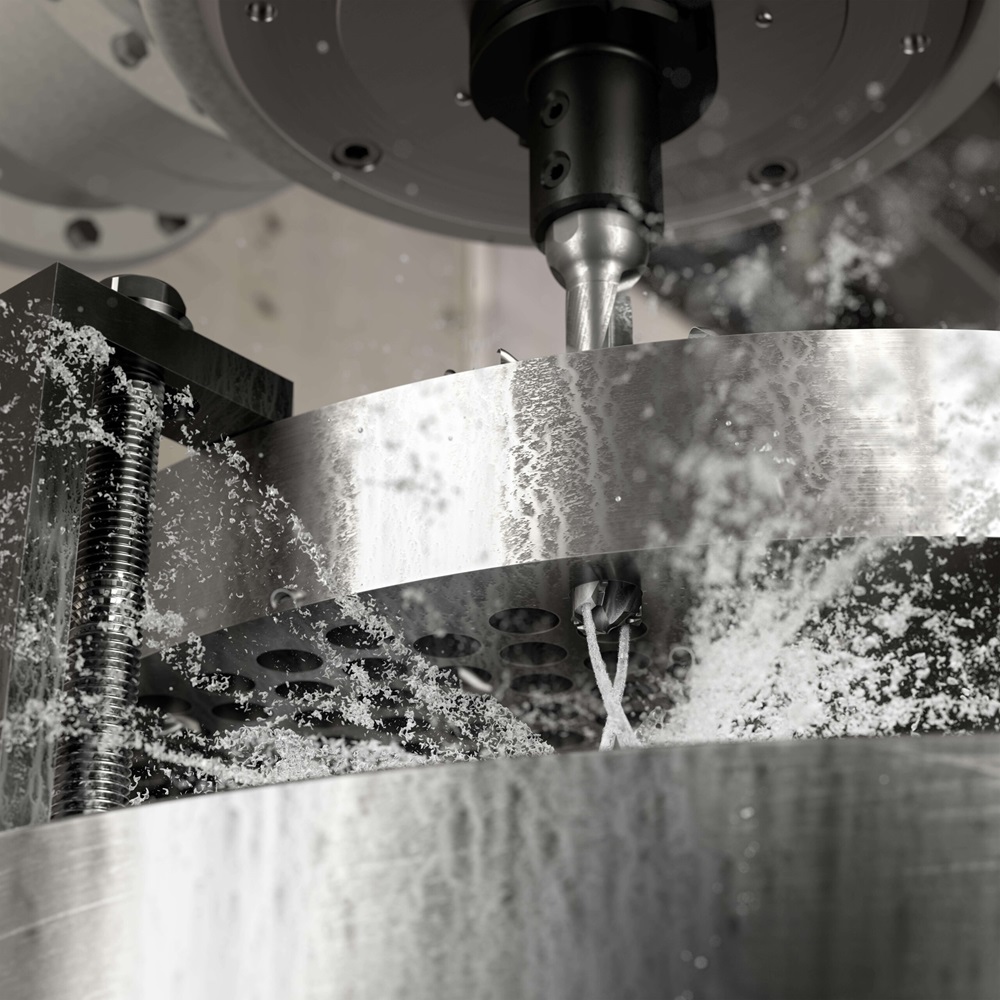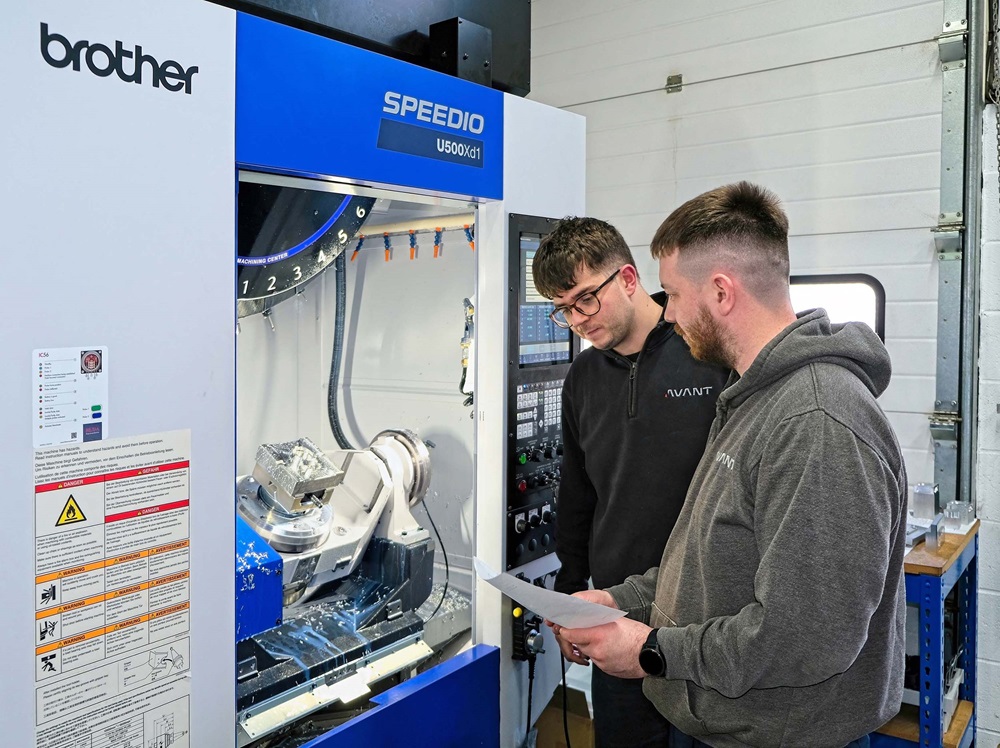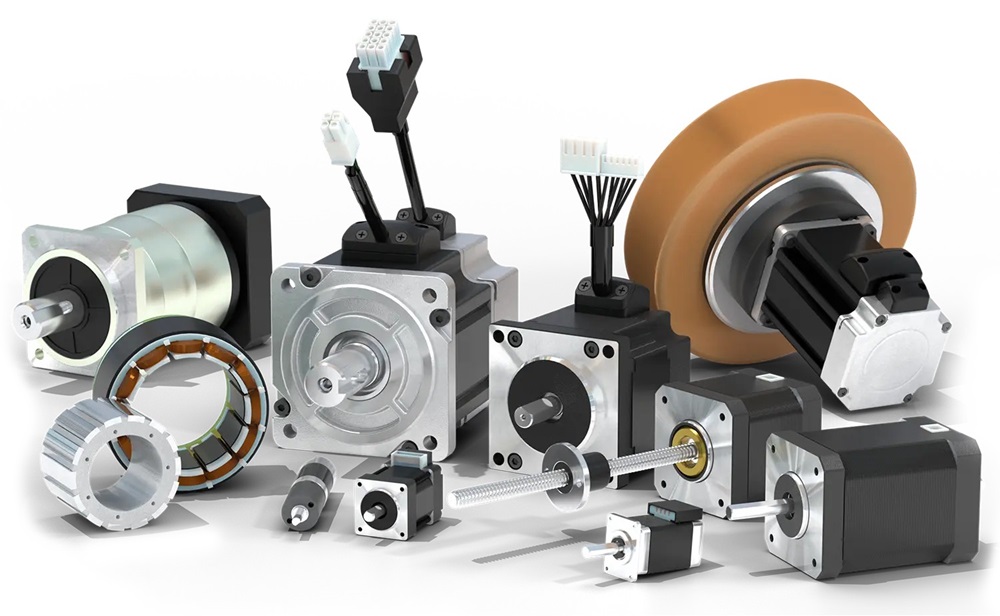Wisbech-based subcontractor Avant Manufacturing was using four 40-taper, three-axis
VMCs (vertical machining centres) when, towards the end of 2024, a sharp upturn in existing
and new business meant that an extra machine was needed quickly.
Dominic Roach, who founded the company in April 2021, wanted to install a five-axis
production centre to reap the benefits of less part re-clamping. The advantages are
principally higher speed of production, and less risk of errors and damage to workpieces due
to excessive manual handling. He also wanted to produce more complex components,
preferably in one hit. However, the space remaining on the shop floor was limited and five-
axis machines tend to be large.
The solution to this conundrum was to install a Brother Speedio U500Xd1 five-axis,
swivelling-trunnion VMC with a 30-taper spindle from Whitehouse Machine Tools- the sole
UK agent for the Japanese manufacturer. Having a 1560 x 2026 mm footprint, the machine
fitted neatly into the available space when it was delivered in December 2024.
According to Whitehouse Machine Tools, subcontractors are increasingly moving to the 30-
taper interface, especially with the Big-Plus face and taper contact option, as it combines
40-taper rigidity with the high speed motions of which the smaller form factor machines are
capable.
“The Brother machine practically sold itself,” states Roach. “We couldn’t find a 40-taper
machine that would fit, while other 30-taper equipment suppliers had a limited number of
production platforms and automation possibilities in their range, which would have limited
our future options.
“Additionally, I was drawn to the Brother because it’s a true five-axis machine, not a three-
axis model with a bolt-on compound table. An added bonus is that Whitehouse offers
unlimited ongoing technical support and is very quick to respond when we have a query.
Someone always gets back to us within half an hour.”
As he was swapping to a smaller diameter tool holder that he had never used before, Roach
was keen to satisfy himself that the Brother machine was powerful enough to remove metal
quickly. Admittedly, most of the material going through the shop is aluminium, with the
remainder mainly plastic, but often billets are reduced to 10% of their original size, such as a
medical robot part that is regularly produced. In one recent instance, a 72 kg block of 6082
aluminium was milled down to a weight of 4 kg, a reduction of more than 94%.
With a similar aluminium billet and Ceratizit roughing end mills, he drove 100 miles west to
Whitehouse Machine Tools’ showroom and technical centre in Kenilworth to put a U500Xd1
through its paces.
“I was impressed not only by the metal removal rate, but also by the size of parts that can
be produced in such a small footprint,” says Roach. “I would have no hesitation producing
components from tougher materials either, as it’s an easy matter to change the machining
strategy to limit the width and depth of cut, and increase the spindle speed and feed rate.”
Since there was an urgent need in Wisbech for the additional spindle, he decided to rent a
U500Xd1 ahead of taking delivery in April 2025 of a more capable model, a U500Xd2.
Whitehouse duly supplied the rental machine and provided two days of on-site training.
The upgraded U500Xd2 has longer travels in X and Y, giving a working volume of 500 x 450 x
380 mm. Rotary axis motions are the same, as are the 16,000 rpm Big-Plus spindle and the
28-position tool magazine, but the control is full five-axis rather than 4+1. A high-accuracy
mode option with 1000-block look-ahead has been selected, as well as 35 bar high-pressure
coolant, and Blum probes for checking cutter length and workpiece position. Chip-to-chip
time is fast at 1.4 seconds owing to simultaneous tool change and rapid traverse in the
linear and rotary axes.
To indicate how much faster the U500Xd1 is, and the U500Xd2 will be, compared with one
of his 40-taper VMCs, Roach cites a scientific part produced from solid aluminium that
formerly required four separate set-ups on three-axis machines. The number of operations
has been halved and the same component is now produced in 36% of the time. That is
because although Op 1 is the same, Ops 2, 3 and 4 are now completed on the five-axis
Brother in a single clamping using the rotary axes to position the part for five-sided
machining.
A job completed in January 2025, involving drilling 60 holes at eight different angles into a
medical plastic block, could not have feasibly been completed on the three-axis machines.
So the availability of the Brother is allowing Avant Manufacturing to gain new business that
it previously had to turn down.
A difference that was noticeable immediately following installation of the U500Xd1 was the
better milled surface finish on components, which far surpasses any customer requirement
received to date. Dimensional tolerances held are tight, down to below 10 µm, despite there
being no temperature control in the factory.
Looking to the future, for obvious reasons Roach is looking to move to larger premises and
has first refusal on an adjacent unit on his current industrial estate in Wisbech. He is
committed to continuing the journey towards 30-taper, five-axis machining to provide
increased capacity for both large and small batch production, especially for the medical,
pharmaceutical and scientific industries that he mainly serves, as well as for the control,
automation and defence sectors.
More information www.wmtcnc.com



















